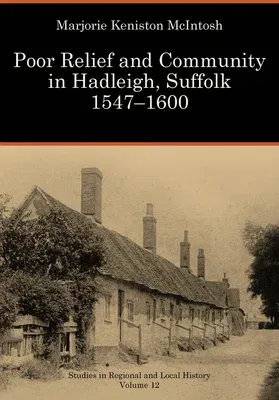Marjorie Keniston McIntosh
(Author)Poor Relief and Community in Hadleigh, Suffolk, 1547-1600Paperback, 1 October 2013

Qty
1
Turbo
Ships in 2 - 3 days
In Stock
Free Delivery
Cash on Delivery
15 Days
Free Returns
Secure Checkout

Part of Series
Studies in Regional and Local History
Print Length
188 pages
Language
English
Publisher
University of Hertfordshire Press
Date Published
1 Oct 2013
ISBN-10
1907396926
ISBN-13
9781907396922
Description
Product Details
Author:
Book Format:
Paperback
Country of Origin:
GB
Date Published:
1 October 2013
Dimensions:
24.13 x
16.76 x
1.02 cm
Genre:
British
ISBN-10:
1907396926
ISBN-13:
9781907396922
Language:
English
Pages:
188
Publisher:
Weight:
417.3 gm